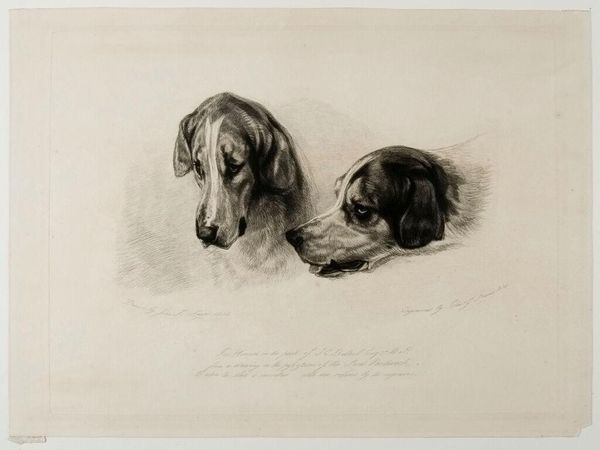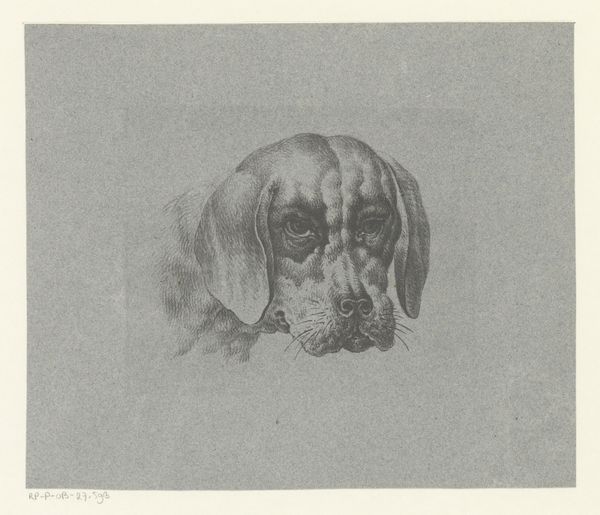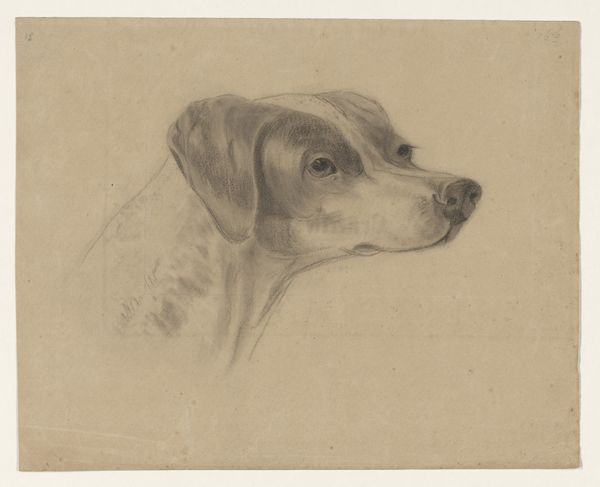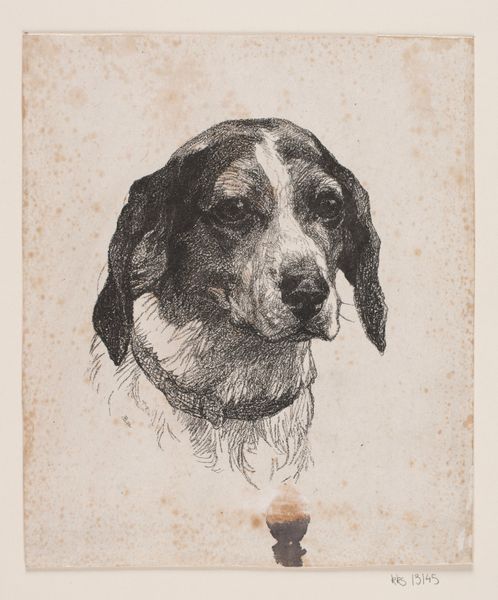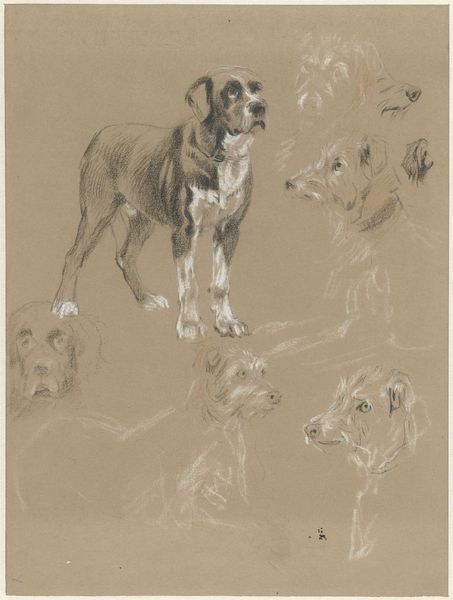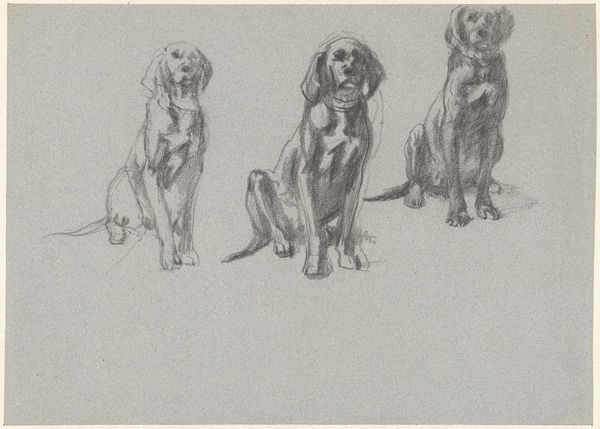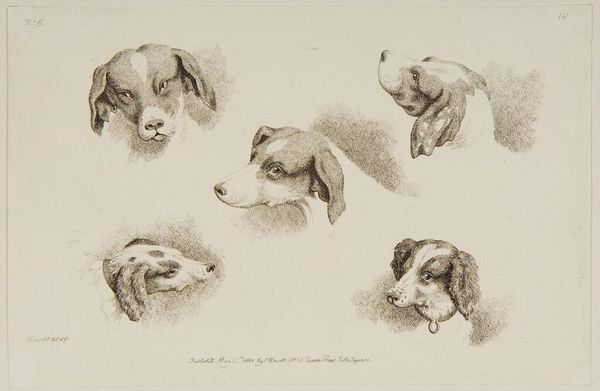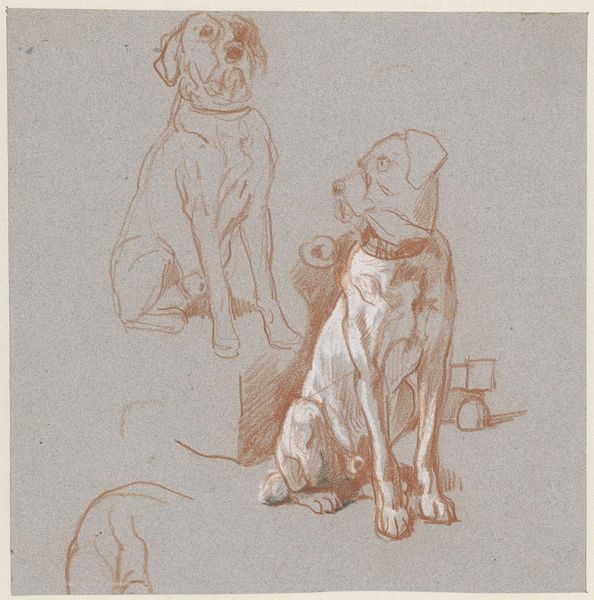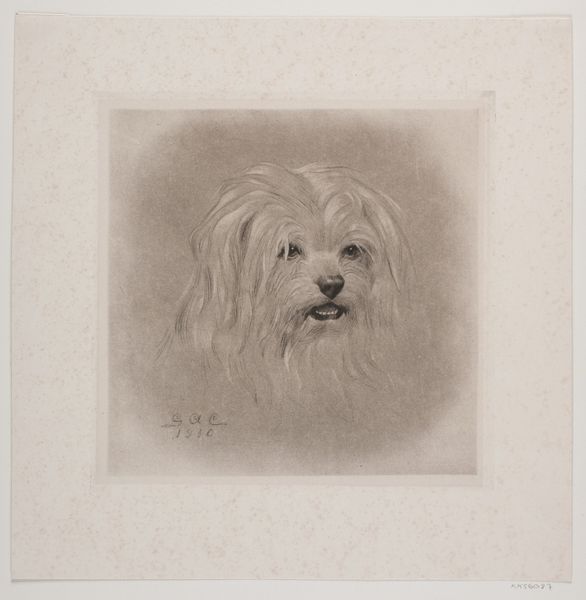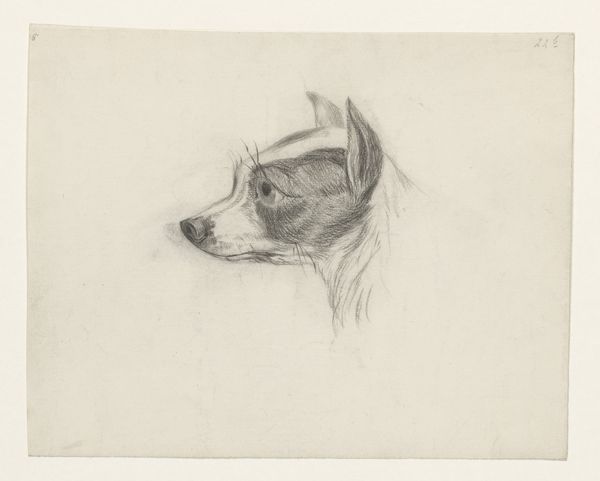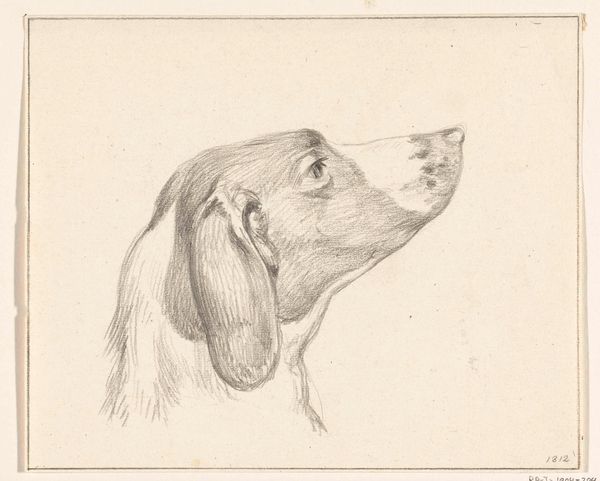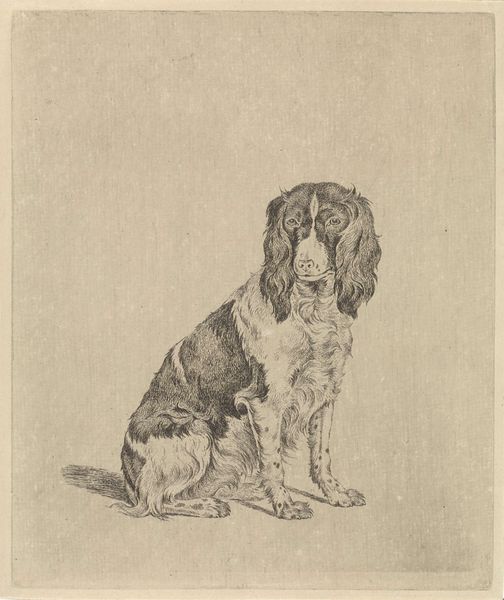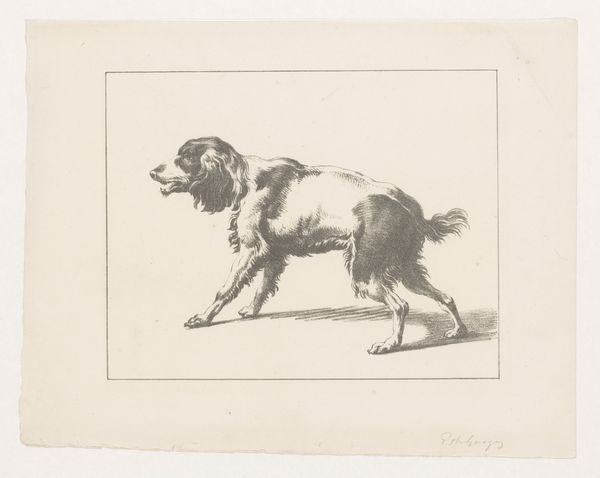
drawing, print, etching
#
portrait
#
drawing
#
animal
# print
#
etching
#
realism
Dimensions: 170 mm (height) x 267 mm (width) (plademaal)
Editor: This is Otto Bache's "To hundehoveder," or "Two Dog Heads," created in 1901. It's an etching, so a print. The dogs look so forlorn. What's your interpretation of this piece? Curator: This print offers an interesting glimpse into the socio-cultural relationship between humans and animals at the turn of the century. Note the title "Two Dog Heads," almost clinical. What do you make of that directness, and its potential audience? Editor: It sounds pretty detached. Is it meant to be scientific, maybe like a study for a painting? Curator: Perhaps. Realism in art was becoming more common and so was depicting ordinary subjects. Do you think the print is glorifying the subject, or depicting a societal norm? It makes me wonder about its market. Editor: I hadn't thought about the market for prints back then. It’s so finely detailed. Do you think prints like this would be popular, for like, middle-class homes? Curator: Precisely! The relative affordability of prints broadened access to art. But let's also think about how imagery contributes to cultural identity and reflects the concerns and values of a society. How might these dogs, with their expressions, be doing that work? Editor: I suppose people did like having pets, and representing them so realistically makes that connection obvious, and possibly relatable. Curator: Exactly. A society immortalizing dogs also speaks volumes about class and wealth in the period, and about human sentimentality, but through art’s objective lens. Thank you for noticing that with me. Editor: This makes me want to go find other pet portraits in the museum!
Comments
No comments
Be the first to comment and join the conversation on the ultimate creative platform.
